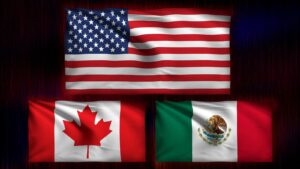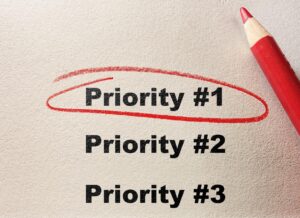Tim Pratte, CEO of Selerix.
How can organizations design benefits that meet the diverse needs of a four-generation workforce while also ensuring employees engage with the right options at the right time? The answer is in personalized benefits and strategic communication.
Back in the day, benefits looked a whole lot different than now. In the ’80s, cafeteria-style benefits were all the rage. The idea was progressive at the time—employees could pick from a limited menu of preset options that best suited their lives.
But the reality was that choices were constrained, communication was sparse and most employees opted for the same plan year after year. Benefits were transactional: Here’s your healthcare plan—see you next open enrollment.
Today, that world is gone. With four generations coexisting in the workforce, each with vastly different priorities, I believe the concept of standardized benefits has become outdated and out of touch—just like the employers that stick to them.
Tailored Benefits And Communication
Think about how employees prioritize depending on who they are and where they are in their careers. An entry-level Gen Z associate fresh out of college may be looking for mental wellness support and telehealth options. Meanwhile, a Baby Boomer manager nearing retirement may care more about physical wellness, stability and health savings.
One thing is sure: None of these groups of employees are satisfied with passive, once-a-year benefit selections anymore. They want more choice, more personalization and more guidance. According to a recent MetLife survey, 68% of Gen Z employees said they want their employer to communicate with them after they have enrolled in benefits, not just during annual open enrollment.
Flexibility is the key to a great employee experience of benefits. But it’s not just the benefits that need to adapt.
I’ve found that communication also plays a critical role in helping employees navigate and select the right options—exactly when they need them. Organizations that tailor benefits communication by generation, career stage and personal milestones can guide employees toward better choices, driving higher satisfaction and cost efficiency.
Personalized communication bridges the gap between what’s available and what employees actually use, ensuring organizations maximize the value of their benefits investments.
Employee Benefits Needs Are Complex
Managing benefits for four generations in the workforce introduces challenges beyond just meeting diverse priorities. Age-based segmentation only scratches the surface.
I think what matters even more is where an employee is in their personal and career journey. A 35-year-old manager juggling childcare responsibilities has different needs than a mid-career employee caring for elderly parents.
Recognizing these nuances and aligning benefits accordingly is essential. According to recent research, millennial employees are likely to prioritize family-related benefits, while Gen Z employees are particularly interested in career development and digital-first wellness tools.
Employees today expect holistic well-being, from physical and financial wellness to mental health support. They also value benefits that extend beyond traditional healthcare, such as telemedicine, wellness stipends, and mental health apps.
Organizations that successfully meet these demands can improve loyalty and reduce turnover. In fact, the same Metlife report cited earlier found that 73% of employees say they are more likely to stay if their health benefits meet their needs.
Personalization And Communication
The employee journey consists of multiple critical touchpoints—from onboarding and promotions to family changes and retirement planning. Each stage presents an opportunity to engage employees with relevant benefits communication. Yet many organizations still limit their communication to open enrollment periods, missing the chance to connect with employees throughout the year.
Personalization at these moments is powerful. Companies that can deliver customized benefits recommendations and decision support based on life events or demographic data will see the results in improved employee experience and utilization. I’ve seen how an always-on, embedded benefits experience can lead to better talent outcomes, including higher engagement and productivity, among employees across career stages.
Importantly, communication shouldn’t just explain benefits but also guide employees to become active healthcare consumers. Research shows that 76% of employees spend less than 30 minutes reviewing benefits information, often defaulting to previous choices without proper evaluation.
Educating employees on their options—through interactive tools and year-round touchpoints—empowers them to make better decisions, improving both individual outcomes and organizational cost-efficiency.
Five Practical Strategies For Personalizing Benefits Communication
1. Segment communication by career and life stages. Customize messages to match an employee’s journey and milestones—whether they’re starting a family, pursuing a promotion or planning retirement.
2. Use decision support tools for tailored recommendations. Leverage decision-support tools that can respond to employee demographics, preferences and life stages to suggest the most relevant benefits options and help employees make informed choices that match their unique needs.
3. Offer consistent benefits communications. Go beyond annual enrollment and provide regular, automated reminders and updates throughout the year, addressing employees’ desire for regular updates.
4. Leverage multi-channel delivery. Meet employees where they are by using many channels: Email, text messages, push notifications, etc. Let employees choose their preferred method of receiving benefits information for maximum engagement.
5. Equip managers to discuss benefits. Train managers to engage employees in meaningful conversations about benefits during one-on-one meetings and career discussions.
Adapt Your Benefits Strategy
So, here’s the bottom line: The days of treating benefits like a yearly checkbox went out with cassette tapes and neon windbreakers. Benefits are powerful tools that shape employee experience, influence retention, and, ultimately, drive success. Organizations that treat them as a one-size-fits-all offering are going to be quickly sidelined.
If companies want to keep pace, they need to make benefits as dynamic and varied as the people they employ. That means using technology to meet each employee where they are and guide them along their journey, whether they’re just starting out or planning their retirement. Personalized benefits communications are a competitive advantage that can keep talent loyal, engaged and, most importantly, satisfied.
For companies ready to step up, the future of benefits isn’t transactional; it’s transformational—and it’s personal.
Forbes Business Council is the foremost growth and networking organization for business owners and leaders. Do I qualify?
Read the full article here











